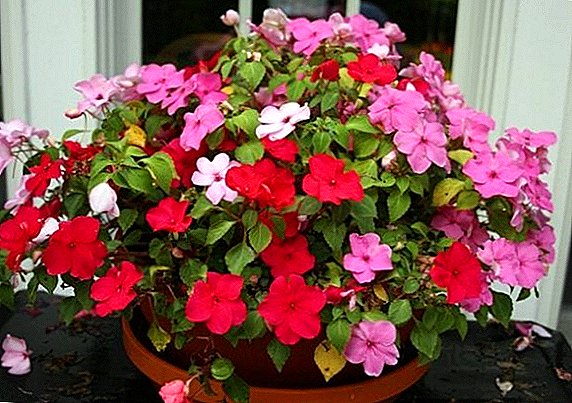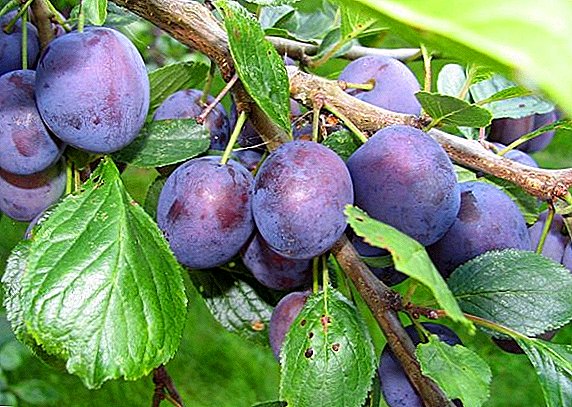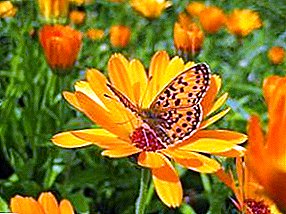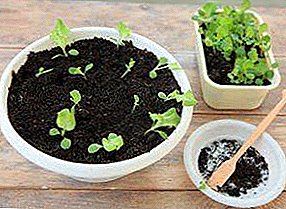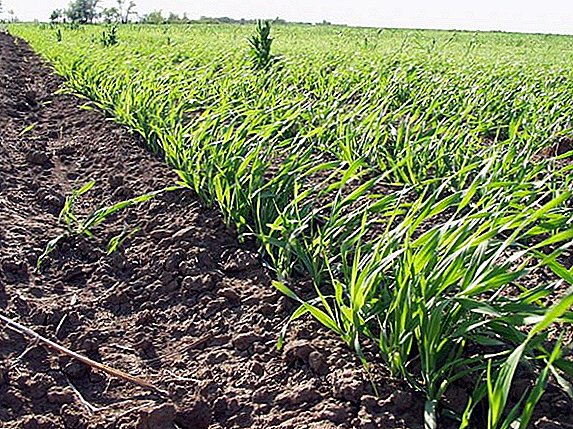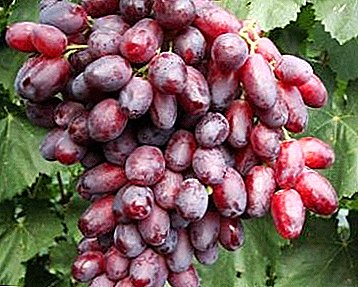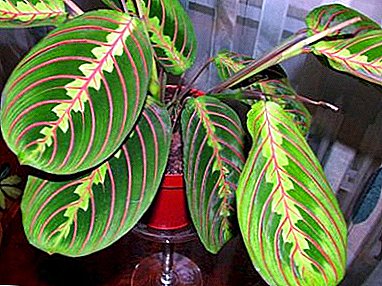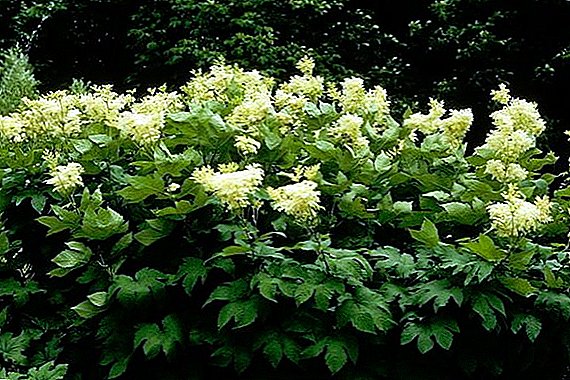 Meadowsweet is a perennial shrub with medicinal properties. But besides this, he is also very beautiful.
Meadowsweet is a perennial shrub with medicinal properties. But besides this, he is also very beautiful.
Botanical description
Meadowsweet (or meadowsweet) is a perennial grass with a height of 60-80 cm with a straight stem. For a long time the wilderness was not recognized as a separate species and referred to the genus Spirey. Now it is allocated in a separate genus, which includes several varieties.
Small light yellowish flowers up to 1 cm in diameter form panicles 15 cm in diameter. The leaves are broad, pinnate, a bit like ferns.
Because of their magnitude in the summer, they evaporate a lot of water. In some species of meadowsweet, they temporarily dry out during the hot period in order to reduce evaporation. Meadowsweet has short rhizomes. For the year, these roots grow no more than 2-3 cm.
Meadowsweet has a pleasant honey-almond smell. Blooms in early summer and blooms for 1.5 months. 
Did you know? Meadowsweet (inflorescences) can be brewed as tea (it has a pleasant taste and honey aroma)
In the wild, shrubs grow in swampy areas, usually on the shores of various bodies of water. Also found in forests, on mountain slopes and on meadows.
The habitat is quite wide - Asia, the Caucasus, temperate latitudes of Europe, is also found in Siberia. Forms fairly large thickets that can reach hundreds of hectares.
Growing conditions
Next, we consider the peculiarities of the growing of the Labaznika - planting and care in the open field, photos of flower beds with meadowsweet.
Location
For the meadows, moistened, but without stagnant water areas are quite suitable. If the groundwater comes close to the soil, it will be necessary to organize a high bed with good drainage.  It can grow in shaded places, but does not tolerate a complete lack of sun. Therefore, it is better to choose areas that are well lit by the sun or with light penumbra from neighboring plants.
It can grow in shaded places, but does not tolerate a complete lack of sun. Therefore, it is better to choose areas that are well lit by the sun or with light penumbra from neighboring plants.
Soil requirements
Meadowsweet does not set special requirements for the soil. But it is better to grow it in neutral, fertile lands. For acidic soils, add lime or ash to make them neutral. Before planting it is useful to make humus or compost.
Add sand to heavy soils - good drainage is required for meadowsweet. Mix them in about 1: 1 ratio.
Meadowsweet landing
Meadowsweet can be planted by several methods: seeds, division of the bush, segments of rhizomes.
Seeds
Seeds are planted in the winter for hardening and stratification. Before planting, clean the place of growth from weeds and moisten it.
Seeds are photosensitive, so choose a shaded place for germination. After the shoots appear, the seedlings can be transplanted to a place of constant growth.
The depth of planting should not exceed 5 cm. Otherwise, the plant simply can not break through the ground. When sowing, maintain a distance of 30-40 cm between the bushes. This will allow them to develop normally and not compete with each other.
In mid-April - early May, shoots will appear. They grow slowly and by the end of autumn usually have up to 5 leaves. In this form, they winter in the snow.
The first flowering of meadowsweet can be observed in 2-3 years after the appearance of sprouts. If unfavorable conditions for growth are created, the period before flowering may increase significantly.
You can sow seeds in spring. For this, it is necessary to soak in growth stimulants ("Zircon", "Novosil"), respect for soil moisture and natural or artificial shading.  And still there is a high risk that the seeds will not grow. Despite the fact that germination lasts up to six years, it is usually much lower. It depends on the place of cultivation, and the place of collection.
And still there is a high risk that the seeds will not grow. Despite the fact that germination lasts up to six years, it is usually much lower. It depends on the place of cultivation, and the place of collection.
Important! Plants planted with seeds in spring grow quite slowly and bloom only after 3-4 years.
As you can see, this method will not allow you to get a blooming garden quickly. It is also risky due to the possible non-growth of seeds. Therefore, whenever possible, it is better to give preference to the vegetative reproduction method.
Reproduction by dividing the bush
It is possible to divide a bush either in the early spring (March-April), or in the fall, after flowering. But remember that during the spring planting time before flowering will be more than if you plant the plants in the fall.
The rhizomes are cut into several pieces. It’s best to drop them off right away. If this is not possible - keep the roots all winter in wet soil or sawdust.
Material should be planted at a distance of at least 50 cm each other. Planting depth - no more than 5 cm. Place the root horizontally, with sharp tops of the kidneys up.  It is necessary to monitor the humidity and purity of the soil near young plants. The remaining conditions - drainage, humidity - remain unchanged.
It is necessary to monitor the humidity and purity of the soil near young plants. The remaining conditions - drainage, humidity - remain unchanged.
With this method of reproduction, plants take root much better, and flowering occurs earlier.
How to care for the wilderness
Despite some of the nuances when growing from seed, wilderness is quite simple.
Watering and soil care
The most important thing in the successful care of the meadowsweet is the proper watering. It should be sufficient, but not excessive. It is enough to water plentifully once a week.
Important! Avoid stagnant water near the root of the plant. This leads to the appearance of fungal diseases.
Fertilizer
In good soil in the feeding is not particularly needed. Nevertheless, it is possible to recommend the application of organic or mineral (superphosphate, potassium sulfate) fertilizers 1-2 times per season. Do not overdo it with nitrogen fertilizers. Then flowering can begin much later. 
Pruning peduncles
To ensure a beautiful view of the plant, regularly prune the flowering inflorescences. You can either pinch them off by hand, or cut off completely dried branches.
Wintering
Meadowsweet - quite cold-resistant plant. Before frost, make a low pruning plant, leave the stem 5-10 cm tall, remove the rest. And in this form the meadowsweet will overwinter perfectly, without additional shelter. In areas with harsh winters, covering the flowers with a layer of peat or compost (10 cm tall) will not be superfluous.
Little about the beneficial properties of the plant
Traditional and unofficial medicine consider it a good anti-inflammatory and antibacterial agent. She is considered a cure for forty diseases. It also has a strong antitumor and immunomodulatory effects.
Herbalists consider a meadow shed as a good cure for colds and flu. In addition, it regulates acidity, and the infusion of flowers relieves heartburn. Additionally, this infusion reduces the risk of blood clots.
Did you know? In ancient times, the Labaznik was considered a guardian plant. To get rid of bad people, to protect yourself from evil spirits, carry with you the pieces of the Labaznika - the roots or the stem.
So, you got acquainted with the meadowsweet, the rules of growing and caring for them, saw the photo and read the description of the meadowsweet. Plant it on your plot, and, in addition to the remarkable appearance, you also get a good remedy for many diseases. And for beekeepers also a wonderful honey plant.


